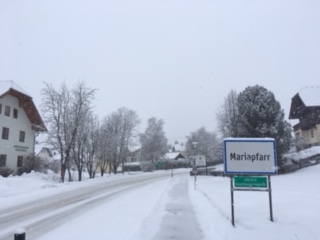Marina’s recent study on the protonation properties of bilin pigments, done in collaboration with the group of Greg Scholes in Princeton, in which she spent some months, has been selected on the 2018 PCCP Hot Articles, congratulations Marina! In the study, we combine structure-based simulations and pH-dependent spectroscopic measures to clarify the role of protonation…
Category: Energy transfer

New book Light Harvesting in Photosynthesis
The new book on Light Harvesting in Photosynthesis has just been published. Edited by recognized experts in the field like R. Croce, R. van Grondelle, H. van Amerongen and I. van Stokkum, and published by CRC Press (Taylor and Francis Group), it covers all aspects on the light harvesting machinery of photosynthesis: the building blocks…

Teaching on embedding methods and energy transfer
Last week Marina and Carles, together with Toni, Ph.D. student of Prof. Luque, assisted to the the traditional Workshop on Theoretical Chemistry held every year in Mariapfarr, a nice town in Austria typically full of snow during winter. This year the workshop focused on Modelling of Environment Effects in Quantum Chemistry, and was scientifically organized…
New issue of Chemical Reviews on light harvesting: check our review on QM studies
The last issue of Chemical Reviews provides several comprehensive reviews on light harvesting phenomena, which cover a variety of topics, including theoretical approaches for energy transfer, single-molecule spectroscopy, organic photovoltaic materials or energy transfer in quantum dot bioconjugates. Due to the enormous number of studies appeared on this topic in the last decade, this will…
Photosynthetic light-harvesting is tuned by the heterogeneous polarizable environment of the protein
In photosynthesis, special antenna proteins that contain multiple light-absorbing molecules (chromophores) are able to capture sunlight and transfer the excitation energy to reaction centers with almost 100% quantum efficiencies. The critical role of the protein scaffold in holding the appropriate arrangement of the chromophores is well established, and can be intuitively understood given the need…
Triplet energy transfer in DNA
Triplet excited states in DNA have been proven to provide a mechanism to thymine dimerization, a photochemical reaction that leads to carcinogenic lesions. However, and in contrast to singlet states, our knowledge about triplet states in DNA is largely limited to the properties of monomeric bases. Thus, the mobility and degree of delocalization of triplet…
Review on emerging applications of energy transfer
You can now acces on-line our review on emerging applications of singlet-singlet and triplet-triplet electronic energy transfer processes. Examples include photosynthetic light-harvesting, light-activated sensors, processes of cooperative and accretive energy pooling and quantum cutting in rare earth-doped crystals, and incoherent triplet-triplet energy upconversion in molecular solutions. The article is highlighted in the cover of the…